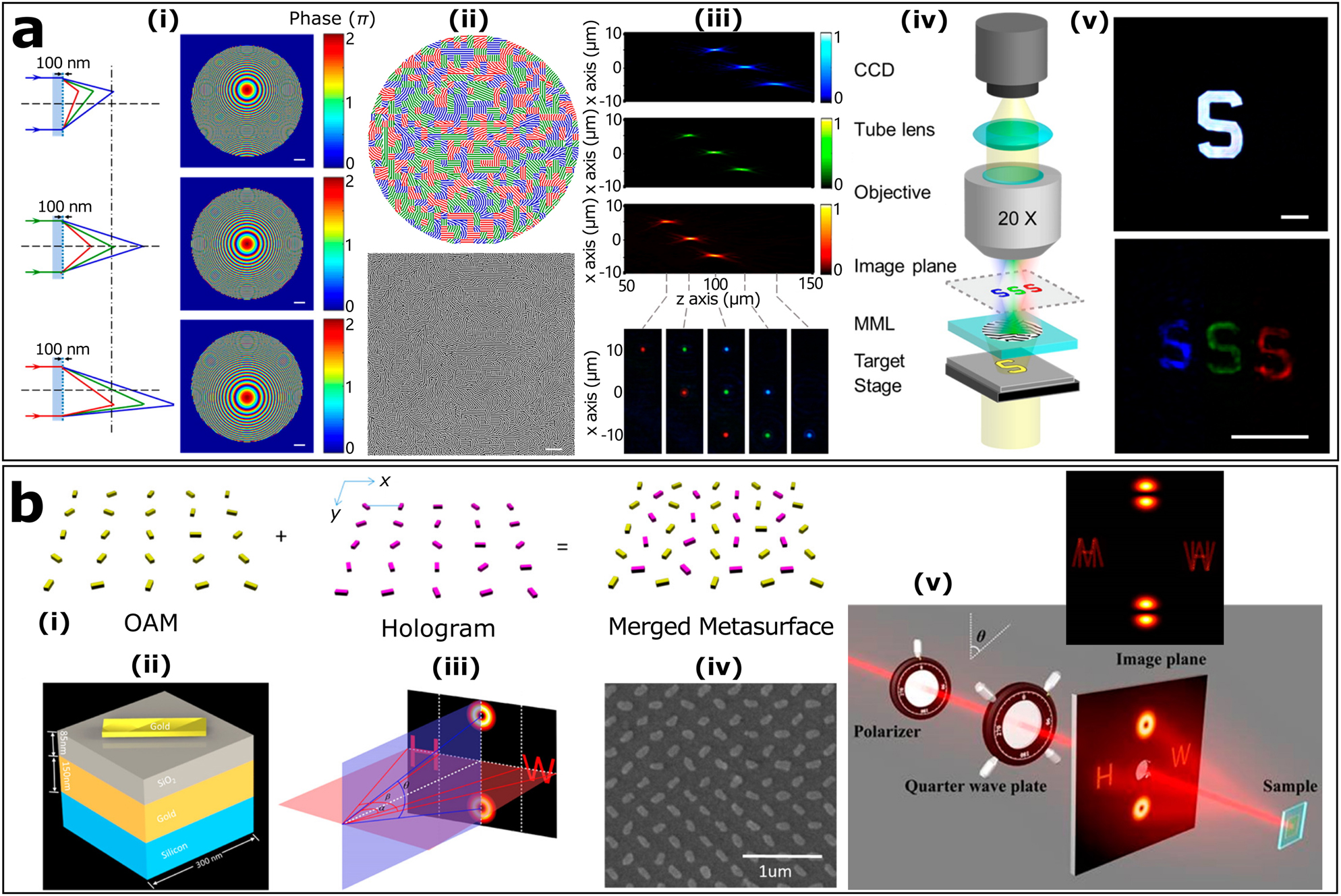Light-focusing metasurfaces are at the forefront of optical innovation, revolutionizing the way we perceive and interact with technology. These cutting-edge devices leverage a unique design—composed of an array of tiny pillars—to manipulate light with precision, enabling the creation of ultra-thin lenses. As a breakthrough in mini-lens technology, they promise significant advancements in consumer electronics lenses, offering lightweight and compact alternatives to traditional optics. The rapid commercialization of these semiconductor-manufactured surfaces has opened doors to numerous applications, from improved imaging in smartphones to enhanced depth sensing in augmented reality. With the ongoing evolution of polarization metasurfaces, the future of optics is not just efficient; it’s also adaptable and incredibly exciting.
Optical metasurfaces, also known as flat optics, exemplify the next generation of lens technology that reshapes our traditional understanding of light manipulation. These devices utilize intricate nanostructures to direct light, presenting a slimmed-down alternative to conventional lenses found in various consumer products. The drive towards miniaturization in lenses aligns with innovations in semiconductor production, paving the way for widespread adoption across industries. Moreover, the integration of polarization into these surfaces facilitates advanced functionalities, granting them capabilities beyond mere imaging. As the field progresses, the possibilities for these transformative optical devices seem boundless, ushering in a new era for both technology and consumer electronics.
The Revolution of Light-Focusing Metasurfaces in Consumer Electronics
Light-focusing metasurfaces have fundamentally changed the way light is manipulated in consumer electronics, introducing a level of precision and efficiency that traditional lenses simply cannot match. These advanced mini-lenses, developed from pioneering research at Harvard, are making their way into popular devices like smartphones and tablets, illustrating a significant departure from conventional optics. By employing thousands of tiny structures on a flat surface, these metasurfaces enable compact design, reducing the size and cost of camera systems while enhancing their capabilities. As their integration becomes mainstream, consumers are benefiting from improved imaging technology that was once constrained by bulky lens systems.
The effectiveness of light-focusing metasurfaces lies not only in their size but also in their ability to maintain high performance across various environments and applications. These devices can be seamlessly manufactured in semiconductor foundries, paving the way for mass production. Thus, as demand for high-quality cameras and 3D sensing technology continues to grow with innovations in consumer electronics, light-focusing metasurfaces stand at the forefront, promising unprecedented improvements in optical performance and functionality.
Frequently Asked Questions
What are light-focusing metasurfaces and how do they relate to mini-lens technology?
Light-focusing metasurfaces are innovative optical devices that use nanostructures to manipulate light, similar to traditional lenses but significantly smaller and cheaper. They represent a leap in mini-lens technology, allowing for mass production using semiconductor manufacturing methods.
How do polarization metasurfaces enhance the functionality of consumer electronics lenses?
Polarization metasurfaces improve consumer electronics lenses by adding functionalities like facial recognition and depth perception at a fraction of the size and cost of traditional systems. This allows for advanced optical capabilities in compact devices.
What role does innovation in optics play in the advancement of light-focusing metasurfaces?
Innovation in optics has been crucial for the development of light-focusing metasurfaces, enabling new ways to control light efficiently. These advancements challenge conventional lens designs and lead to more space-efficient and cost-effective solutions in consumer electronics.
In what ways does semiconductor manufacturing contribute to the production of light-focusing metasurfaces?
Semiconductor manufacturing enables the mass production of light-focusing metasurfaces by utilizing established fabrication techniques. This scalability allows companies like Metalenz to produce millions of devices cost-effectively for various consumer electronics applications.
What advantages do light-focusing metasurfaces have over traditional lenses in consumer electronics?
Light-focusing metasurfaces offer several advantages over traditional lenses, including reduced size, lower manufacturing costs, and the ability to integrate advanced functionalities such as 3D sensing and improved depth perception without the bulk of conventional optics.
What potential applications can emerge from the use of polarization metasurfaces in consumer electronics?
Potential applications of polarization metasurfaces in consumer electronics include enhanced security features for smartphones, improved imaging systems, air quality monitoring, and innovative health diagnostics capabilities, making these technologies significant for future advancements.
How does the commercialization of light-focusing metasurfaces impact the consumer electronics market?
The commercialization of light-focusing metasurfaces is transforming the consumer electronics market by enabling manufacturers to create slimmer, more efficient devices with advanced optical capabilities, thus pushing the boundaries of product design and functionality.
What future innovations can be expected from companies working with light-focusing metasurfaces?
Future innovations from companies specializing in light-focusing metasurfaces may include new functionalities such as robust biometric security, enhanced augmented reality experiences, and novel optical sensing technologies that push the limits of current consumer electronic devices.
| Key Points | Details |
|---|---|
| Rob Devlin’s Role | Developed innovative mini-lens during Harvard doctoral studies. |
| Metalenz Startup | Founded in 2016; produces light-focusing metasurfaces for consumer electronics |
| Production Scale | About 100 million metasurfaces have been produced and installed. |
| Device Integration | Metasurfaces used in devices like iPad, Samsung Galaxy S23 Ultra. |
| Market Disruption | New technology disrupts traditional lens-making methods, increases design possibilities. |
| Future Innovations | Development of Polar ID for enhanced smartphone security and new applications. |
Summary
Light-focusing metasurfaces are revolutionizing optical technology by offering compact and cost-effective solutions for modern devices. Originating from research at Harvard, these innovative mini-lenses are not only redefining how light is manipulated but also being seamlessly integrated into consumer electronics. With the demand for these products soaring, companies like Metalenz are at the forefront of this technological disruption, showcasing the potential for further advancements in imaging and sensing applications. As we look to the future, the ongoing development of technologies such as Polar ID illustrates the vast opportunities that light-focusing metasurfaces present for enhancing both security and functionality in various industries.
